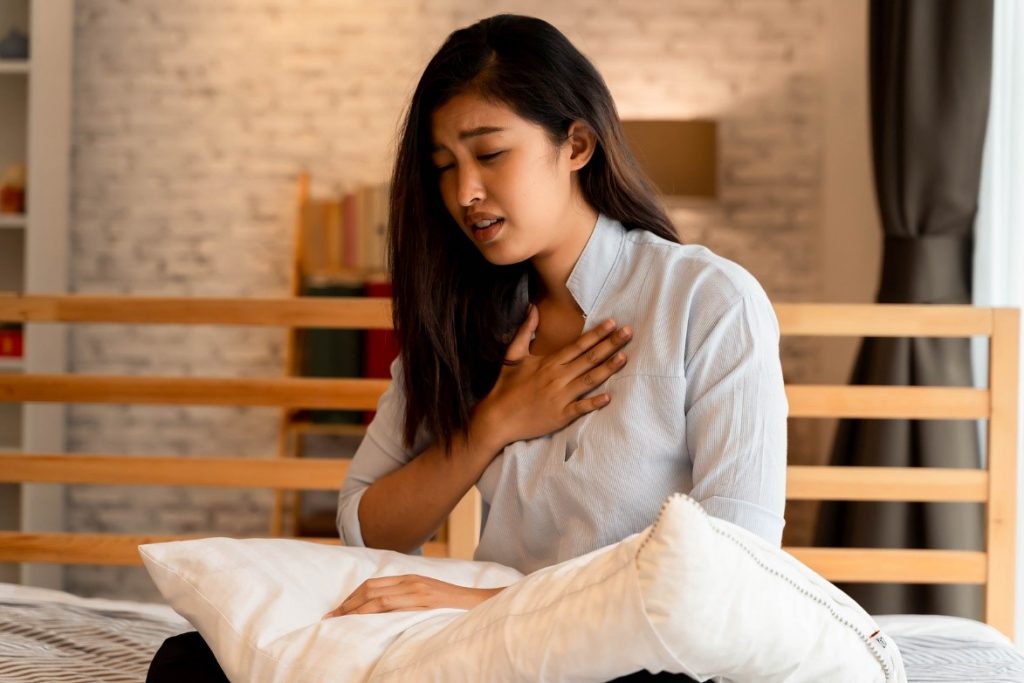
Acute respiratory distress syndrome or ARDS is a life-threatening lung injury that causes fluid to leak into the lungs. ARDS usually occurs in people who have significant injuries or those who are critically ill.
In ARDS, the fluid starts leaking into the alveoli, or the tiny, elastic air sacs in the lungs. The presence of fluid keeps the lungs from filling with adequate air, which means less oxygen reaches the bloodstream. Due to this, the organs are deprived of oxygen which is critical for their functioning. (Mayo Clinic, 2020)
Symptoms of ARDS
Some of the symptoms of ARDS are:
- Shortness of breath, often to a distressing level
- Rapid breathing
- Extreme tiredness
- Low blood pressure
- Lips and fingernails may have a bluish color
The signs and symptoms of ARDS could vary in intensity depending on factors such as its severity, and any underlying heart or lung disease.
Diagnosis
A doctor may do a chest x-ray to look for fluid in the lungs and a blood test to determine the level of oxygen starvation for patients showing the above symptoms. Doctors may suspect ARDS if they can identify a lung injury. ARDS must be separated from heart failure or chronic lung disease, which may be challenging to do sometimes since heart problems and ARDS have similar symptoms. (American Lung Association, 2020)
Causes of ARDS
ARDS results from a lung injury, usually caused by an infection or trauma. Sometimes the exact nature of the damage may not be clear. Some of the underlying causes may include:
- Sepsis, which occurs when the body’s immune system works aggressively to fight off infection or trauma and is one of the most common causes of ARDS
- Inhalation of high concentrations of harmful substances like smoke, and chemical fumes
- Injury to the head, chest, or other areas of the body
- Severe pneumonia
- COVID-19
- Pancreatitis
- Blood transfusions
Risk Factors
Some of the factors that increase the risk of ARDS are:
- Presence of chronic lung disease
- History of chronic alcoholism
- Advanced age
Treatment
Since there is no cure for ARDS presently, treatment focuses on providing supportive care for the patient as the lungs heal. It is critical to get adequate oxygen into the blood and deliver it to the body to prevent damage and remove injury that caused ARDS to develop.
Treatment methods include ventilator support, prone positioning, administering medications or sedation to prevent movement, etc.
COVID-19 and ARDS
COVID-19 can cause lasting lung damage, and one of the severe lung complications caused by COVID-19 is ARDS. Patients with ARDS may find it difficult to breathe on their own. They may require ventilator support to help in oxygen circulation through the body.
Recovery
As we continue to deal with COVID-19, it’s crucial to understand how it can affect the lungs during illness and afterward. After a severe case of COVID-19, recovery from lung damage takes time. It could take between three months to a year or even more for a person’s lung function to return to its pre-COVID level. Due to this, patients and doctors must be prepared for continuing treatment and therapy. (Galiatsatos, 2021)
Today with improved treatments, many people are surviving ARDS. However, sometimes they may end up with severe or lasting effects. Some of the effects of ARDS are added symptoms.
- Continued Breathing Trouble: While many people with ARDS recover their lung function, others may face breathing problems for the rest of their lives.
- Memory Loss: The low oxygen levels in the blood could lead to memory loss or cognitive problems. In some cases, the damage could be permanent.
- Depression: Some ARDS survivors may also go through a period of depression which is treatable.
- Muscle Weakness: Prolonged treatment in the hospital could weaken the muscles.
On the other hand, many people who develop ARDS may not survive. The risk factor increases with age, the severity of the illness, and any other underlying medical conditions.
Not being able to breathe is scary, especially in the elderly and young children. If you or a loved one had COVID-19 and are in recovery, be mindful of complications. If symptoms of ARDS are present, seek immediate medical care. Go to the nearest ER where a doctor can take x-rays and properly diagnose and treat the condition.
Works Cited
Mayo Clinic. “ARDS.” Mayo Clinic, Mayo Foundation for Medical Education and Research, 13 June 2020, www.mayoclinic.org/diseases-conditions/ards/symptoms-causes/syc-20355576.
American Lung Association. “Diagnosing and Treating ARDS.” American Lung Association, 2020, www.lung.org/lung-health-diseases/lung-disease-lookup/ards/ards-symptoms-and-diagnoses.
Galiatsatos, Panagis. “COVID-19 Lung Damage.” Johns Hopkins Medicine, 2021, www.hopkinsmedicine.org/health/conditions-and-diseases/coronavirus/what-coronavirus-does-to-the-lungs.
